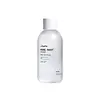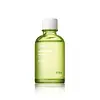What's inside
What's inside
 Key Ingredients
Key Ingredients

 Benefits
Benefits

 Ingredients Side-by-side
Ingredients Side-by-side

Water
Skin ConditioningGluconolactone
Skin ConditioningPropanediol
Solvent1,2-Hexanediol
Skin ConditioningDipropylene Glycol
HumectantSodium Hydroxide
BufferingSodium Hyaluronate
HumectantAlthaea Rosea Flower Extract
Skin ConditioningEnantia Chlorantha Bark Extract
Skin ConditioningPanthenol
Skin ConditioningPolyglyceryl-10 Laurate
Skin ConditioningButylene Glycol
HumectantEthylhexylglycerin
Skin ConditioningSodium PCA
HumectantPentylene Glycol
Skin ConditioningBeta-Glucan
Skin ConditioningCaprylyl Glycol
EmollientOleanolic Acid
Skin ConditioningTocopherol
AntioxidantCaprylic/Capric Triglyceride
MaskingPistacia Lentiscus Gum
MaskingHydrogenated Lecithin
EmulsifyingPhenethyl Alcohol
MaskingWater, Gluconolactone, Propanediol, 1,2-Hexanediol, Dipropylene Glycol, Sodium Hydroxide, Sodium Hyaluronate, Althaea Rosea Flower Extract, Enantia Chlorantha Bark Extract, Panthenol, Polyglyceryl-10 Laurate, Butylene Glycol, Ethylhexylglycerin, Sodium PCA, Pentylene Glycol, Beta-Glucan, Caprylyl Glycol, Oleanolic Acid, Tocopherol, Caprylic/Capric Triglyceride, Pistacia Lentiscus Gum, Hydrogenated Lecithin, Phenethyl Alcohol
Water
Skin ConditioningPropanediol
SolventGlycerin
HumectantMethylpropanediol
SolventCentella Asiatica Extract
CleansingHydrolyzed Glycosaminoglycans
HumectantSodium Hyaluronate Crosspolymer
HumectantHydrolyzed Hyaluronic Acid
HumectantRaspberry Ketone
MaskingHydroxypropyltrimonium Hyaluronate
Sodium Acetylated Hyaluronate
HumectantSodium Hyaluronate
HumectantEthylhexylglycerin
Skin ConditioningHyaluronic Acid
HumectantMadecassoside
AntioxidantAsiaticoside
AntioxidantAloe Barbadensis Leaf Juice Powder
Skin ConditioningBenzyl Glycol
SolventErythritol
HumectantHydroxyethylcellulose
Emulsion StabilisingBiosaccharide Gum-1
HumectantDipotassium Glycyrrhizate
HumectantPolyglucuronic Acid
Skin ConditioningButylene Glycol
HumectantDipropylene Glycol
HumectantCaprylyl Glycol
EmollientPanthenol
Skin ConditioningAllantoin
Skin ConditioningPantolactone
HumectantXanthan Gum
Emulsifying1,2-Hexanediol
Skin ConditioningHydroxyacetophenone
AntioxidantDisodium EDTA
Water, Propanediol, Glycerin, Methylpropanediol, Centella Asiatica Extract, Hydrolyzed Glycosaminoglycans, Sodium Hyaluronate Crosspolymer, Hydrolyzed Hyaluronic Acid, Raspberry Ketone, Hydroxypropyltrimonium Hyaluronate, Sodium Acetylated Hyaluronate, Sodium Hyaluronate, Ethylhexylglycerin, Hyaluronic Acid, Madecassoside, Asiaticoside, Aloe Barbadensis Leaf Juice Powder, Benzyl Glycol, Erythritol, Hydroxyethylcellulose, Biosaccharide Gum-1, Dipotassium Glycyrrhizate, Polyglucuronic Acid, Butylene Glycol, Dipropylene Glycol, Caprylyl Glycol, Panthenol, Allantoin, Pantolactone, Xanthan Gum, 1,2-Hexanediol, Hydroxyacetophenone, Disodium EDTA
Ingredients Explained
These ingredients are found in both products.
Ingredients higher up in an ingredient list are typically present in a larger amount.
1,2-Hexanediol is a synthetic liquid and another multi-functional powerhouse.
It is a:
- Humectant, drawing moisture into the skin
- Emollient, helping to soften skin
- Solvent, dispersing and stabilizing formulas
- Preservative booster, enhancing the antimicrobial activity of other preservatives
Butylene Glycol (or BG) is used within cosmetic products for a few different reasons:
Overall, Butylene Glycol is a safe and well-rounded ingredient that works well with other ingredients.
Though this ingredient works well with most skin types, some people with sensitive skin may experience a reaction such as allergic rashes, closed comedones, or itchiness.
Learn more about Butylene GlycolCaprylyl Glycol is a humectant and emollient, meaning it attracts and preserves moisture.
It is a common ingredient in many products, especially those designed to hydrate skin. The primary benefits are retaining moisture, skin softening, and promoting a healthy skin barrier.
Though Caprylyl Glycol is an alcohol derived from fatty acids, it is not the kind that can dry out skin.
This ingredient is also used as a preservative to extend the life of products. It has slight antimicrobial properties.
Learn more about Caprylyl GlycolDipropylene Glycol is a synthetically created humectant, stabilizer, and solvent.
This ingredient helps:
Dipropylene glycol is technically an alcohol, but it belongs to the glycol family (often considered part of the ‘good’ alcohols). This means it is hydrating and gentle on skin unlike drying solvent alcohols like denatured alcohol.
As a masking agent, Dipropylene Glycol can be used to cover the smell of other ingredients. However, it does not have a scent.
Studies show Dipropylene Glycol is considered safe to use in skincare.
Learn more about Dipropylene GlycolEthylhexylglycerin (we can't pronounce this either) is commonly used as a preservative and skin softener. It is derived from glyceryl.
You might see Ethylhexylglycerin often paired with other preservatives such as phenoxyethanol. Ethylhexylglycerin has been found to increase the effectiveness of these other preservatives.
Panthenol is a common ingredient that helps hydrate and soothe the skin. It is found naturally in our skin and hair.
There are two forms of panthenol: D and L.
D-panthenol is also known as dexpanthenol. Most cosmetics use dexpanthenol or a mixture of D and L-panthenol.
Panthenol is famous due to its ability to go deeper into the skin's layers. Using this ingredient has numerous pros (and no cons):
Like hyaluronic acid, panthenol is a humectant. Humectants are able to bind and hold large amounts of water to keep skin hydrated.
This ingredient works well for wound healing. It works by increasing tissue in the wound and helps close open wounds.
Once oxidized, panthenol converts to pantothenic acid. Panthothenic acid is found in all living cells.
This ingredient is also referred to as pro-vitamin B5.
Learn more about PanthenolPropanediol is an all-star ingredient. It softens, hydrates, and smooths the skin.
It’s often used to:
Propanediol is not likely to cause sensitivity and considered safe to use. It is derived from corn or petroleum with a clear color and no scent.
Learn more about PropanediolSodium Hyaluronate is hyaluronic acid's salt form. It is commonly derived from the sodium salt of hyaluronic acid.
Like hyaluronic acid, it is great at holding water and acts as a humectant. This makes it a great skin hydrating ingredient.
Sodium Hyaluronate is naturally occurring in our bodies and is mostly found in eye fluid and joints.
These are some other common types of Hyaluronic Acid:
Learn more about Sodium HyaluronateWater. It's the most common cosmetic ingredient of all. You'll usually see it at the top of ingredient lists, meaning that it makes up the largest part of the product.
So why is it so popular? Water most often acts as a solvent - this means that it helps dissolve other ingredients into the formulation.
You'll also recognize water as that liquid we all need to stay alive. If you see this, drink a glass of water. Stay hydrated!
Learn more about Water